Abstract
The Schreber case has been used by generations of psychoanalysts and psychiatrists to exemplify many features of the psychoanalytic conception of psychosis. It has generally been considered the origin of a great debate in psychoanalysis as to whether schizophrenia is a disorder of nature or of nurture. I seek in this contribution to proffer a newer theory of psychopathology, one which is based upon the conception of primary and secondary disorders of attachment (bonding) and which presents itself clinically as disorders of self-regulation and of interactional regulation. I attempt to explicate this theory in the Schreber case by demonstrating that his symptoms revealed: (a) failures of normal mental state regulations, (b) the emergence of symptoms which then secondarily and pathologically restore regulation in a pathological manner, and finally (c) his/her very symptoms seem to regulate a state in the family system and/or in the system of the culture at large.
Full text
PDF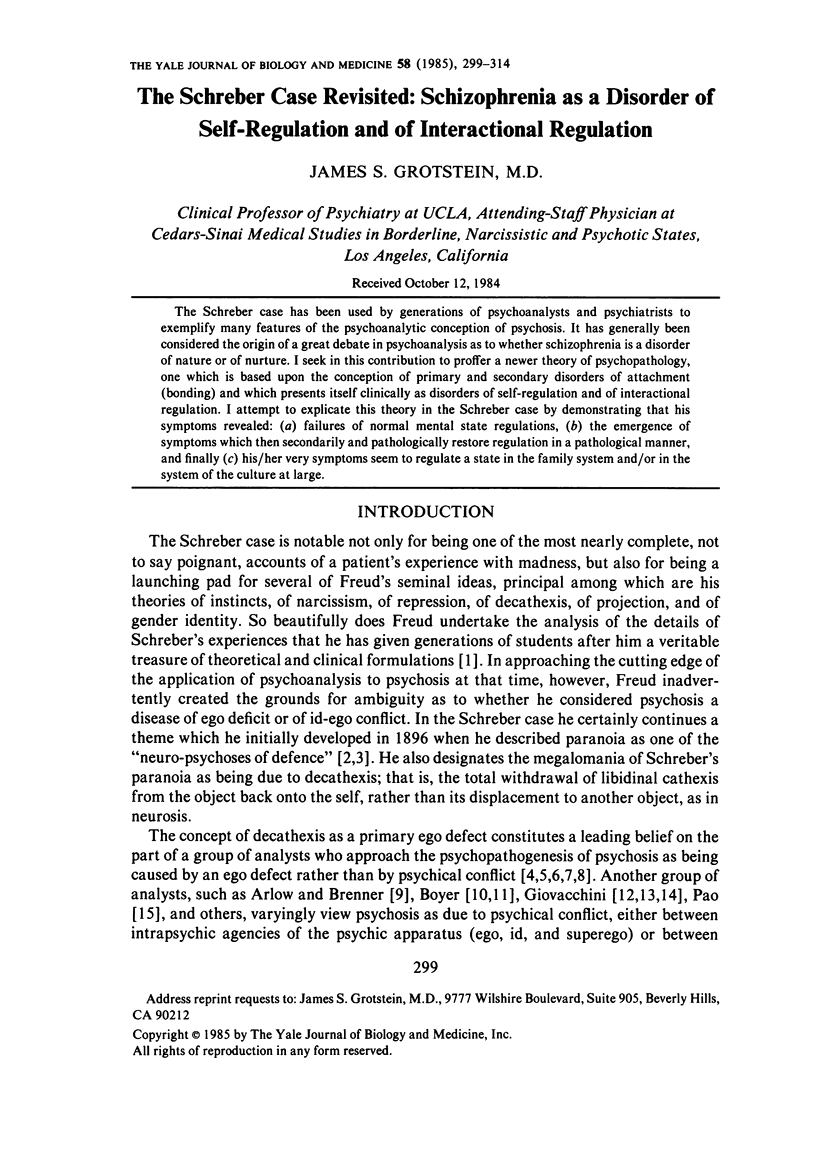
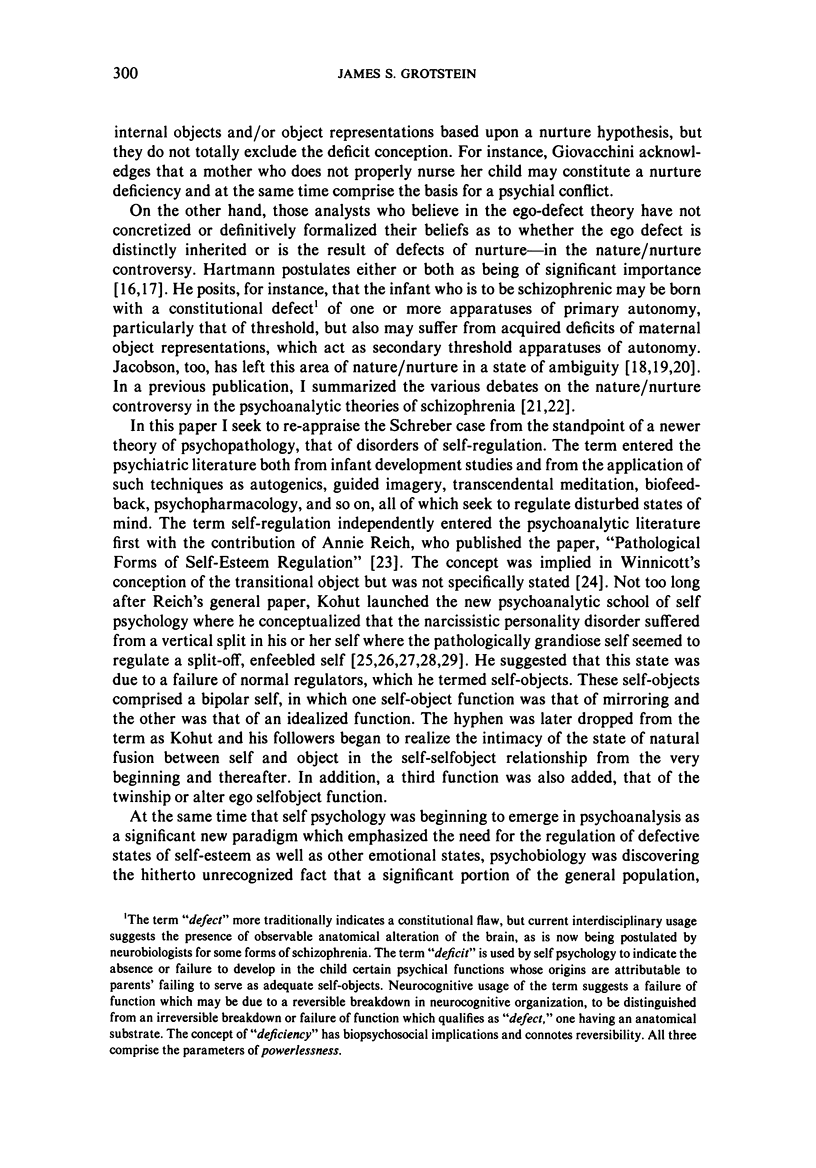
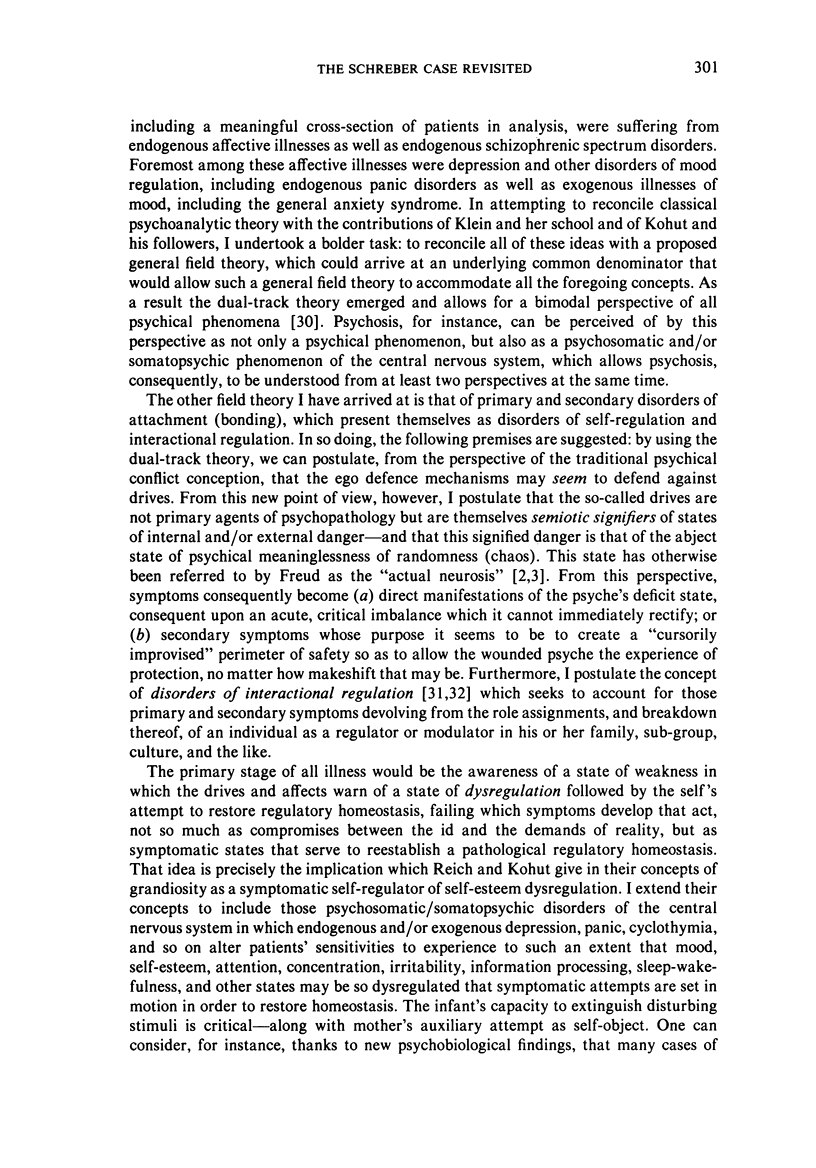
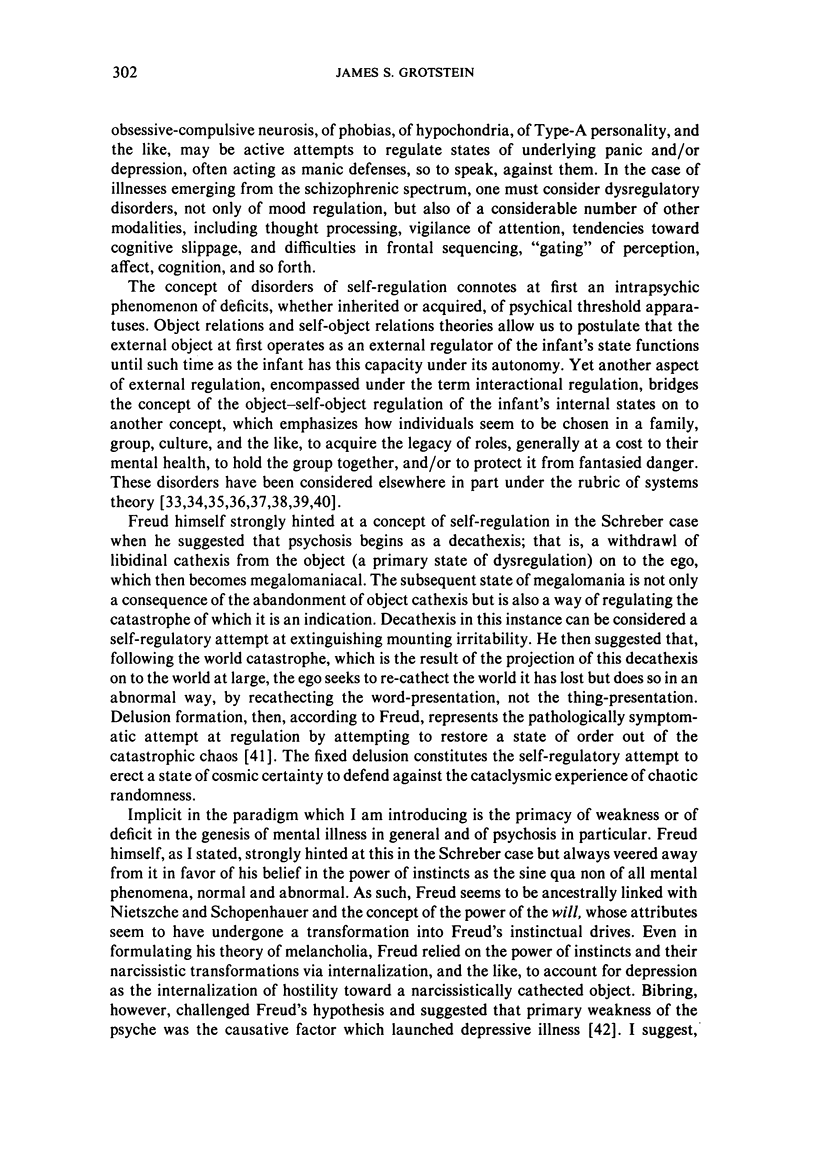
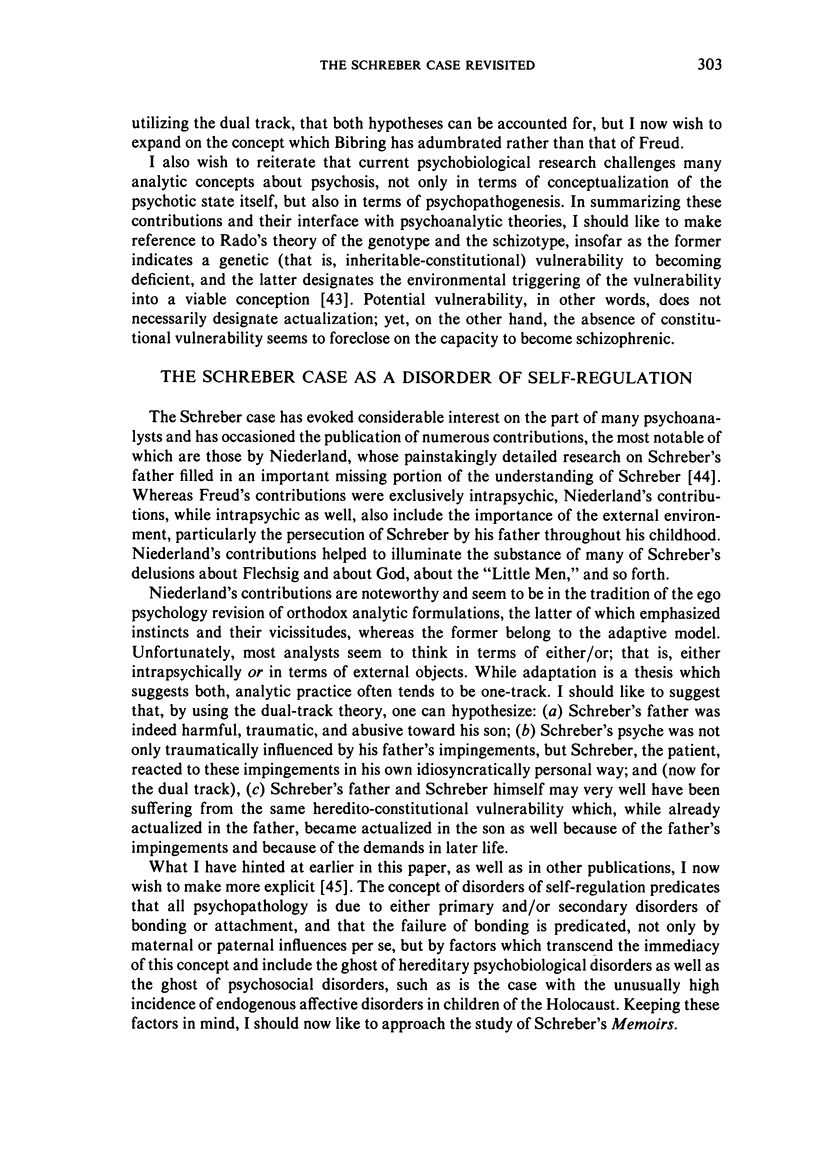
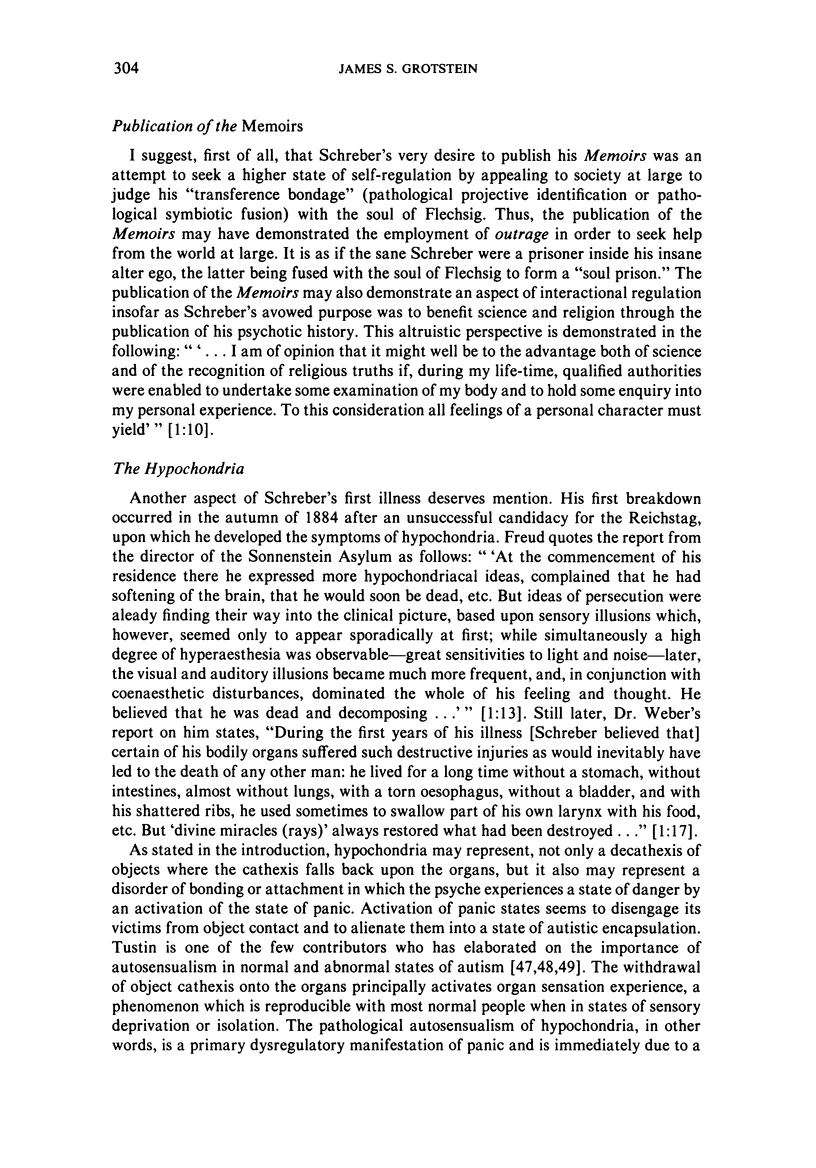
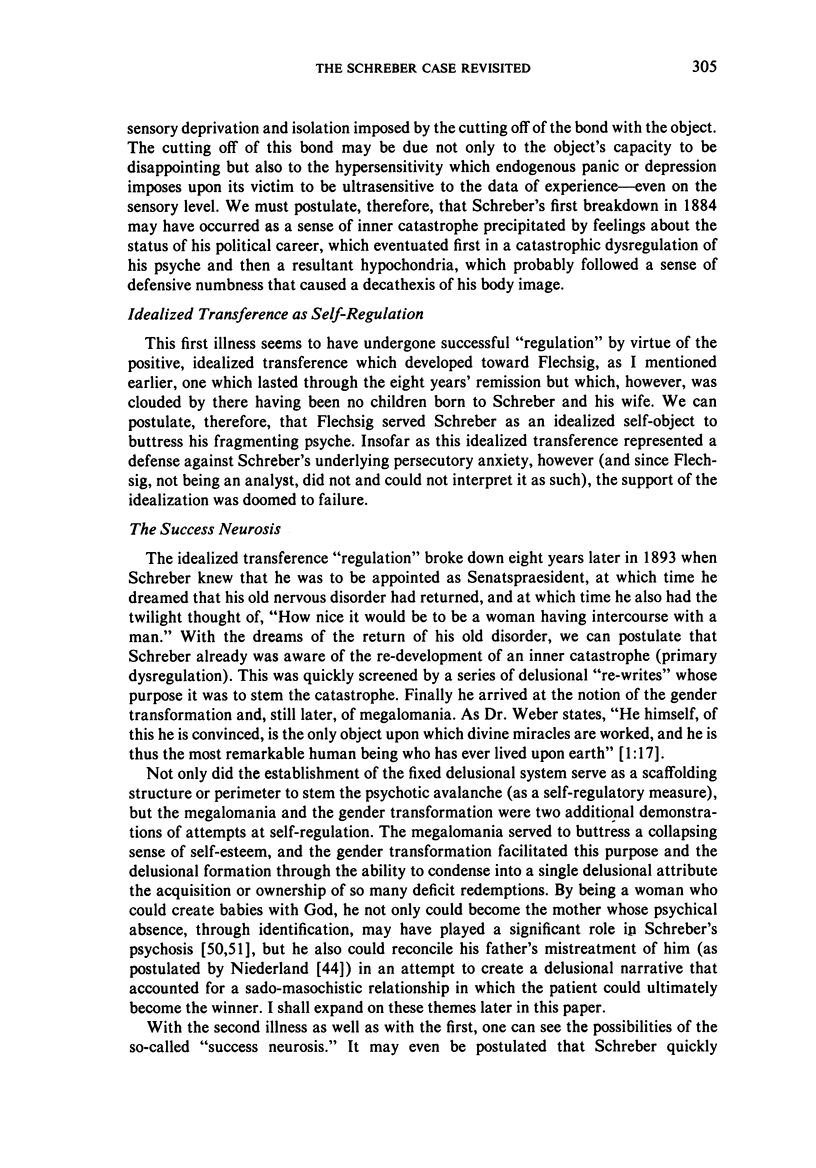

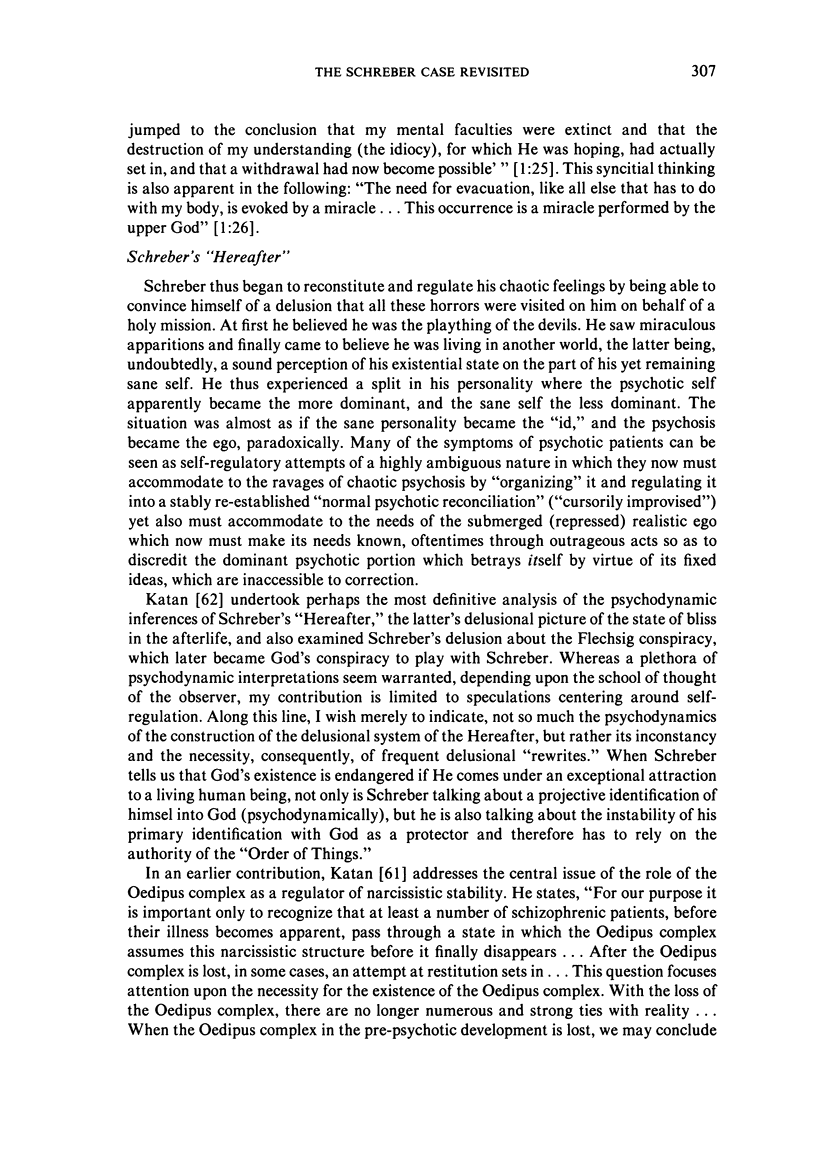
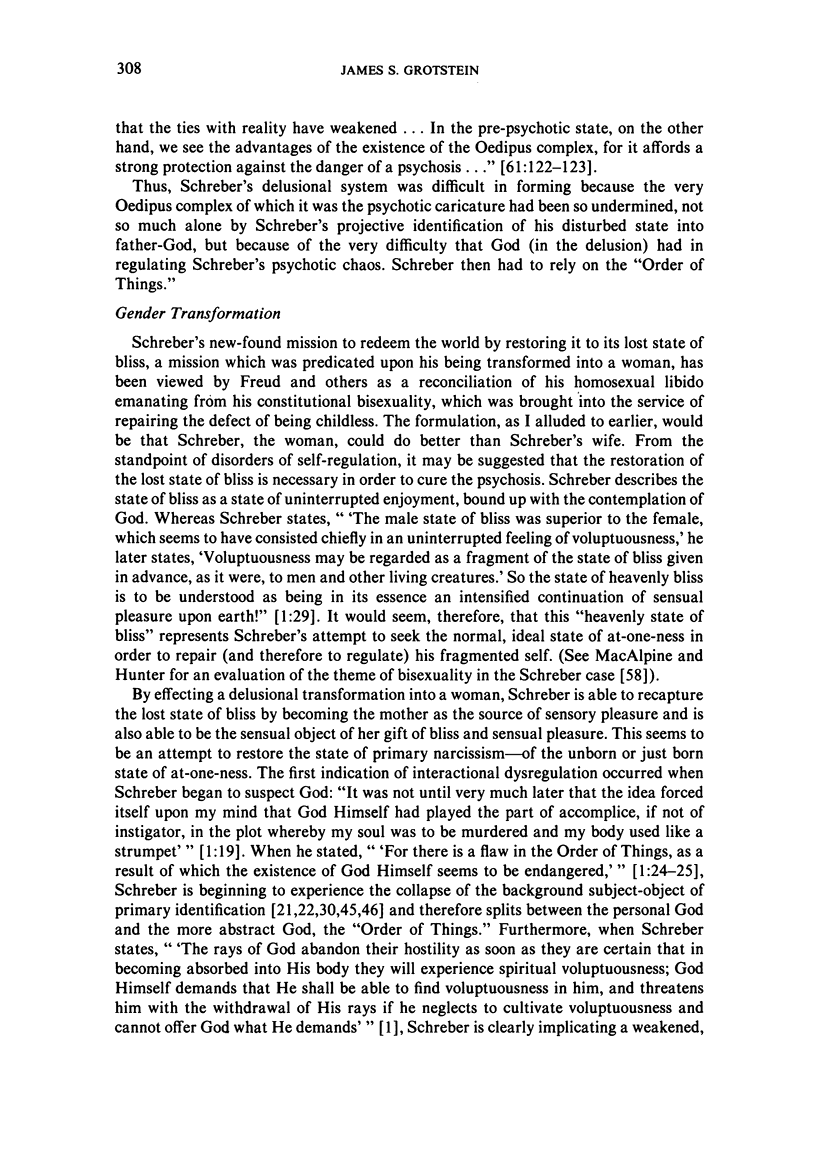
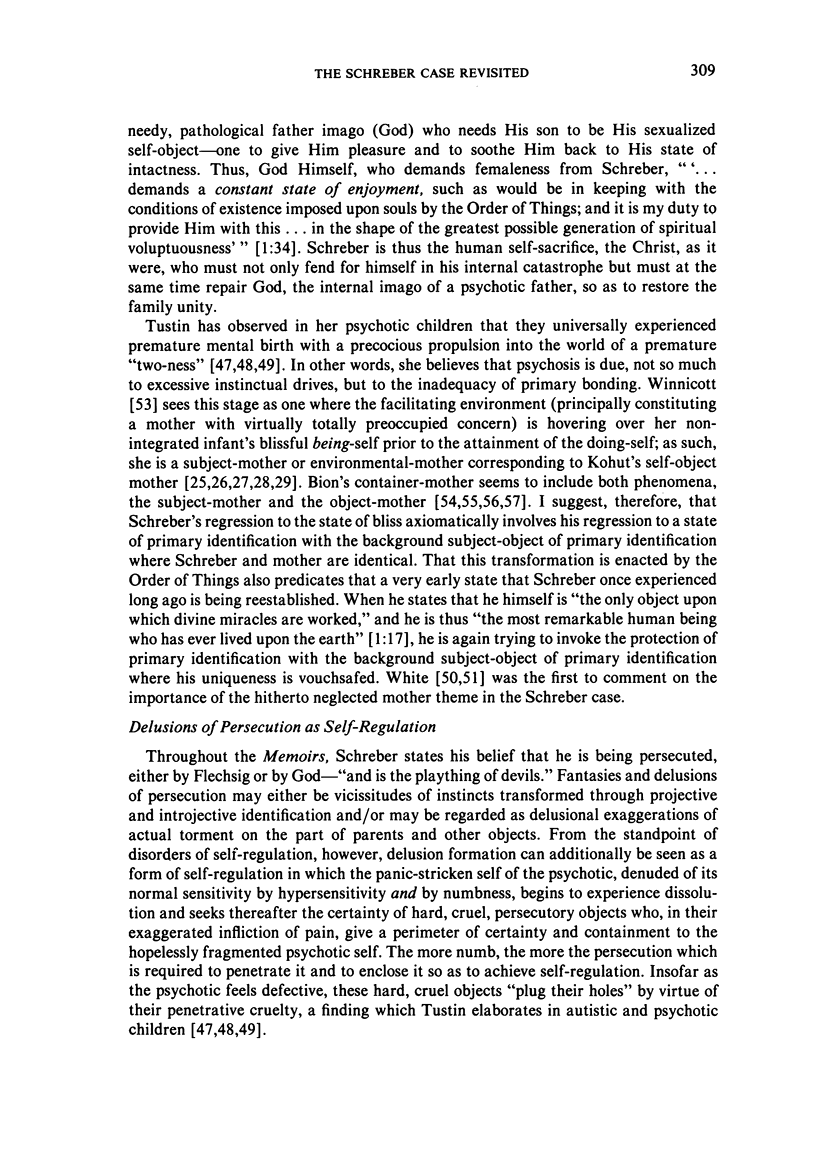
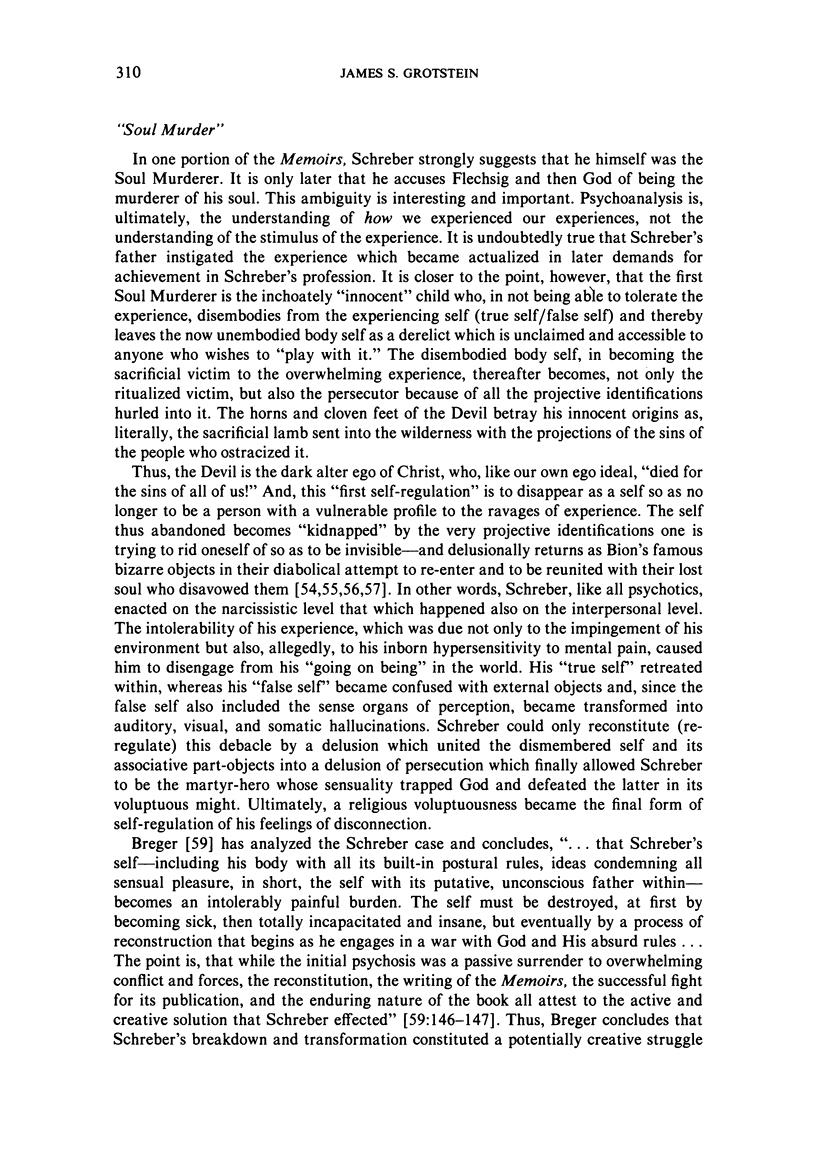
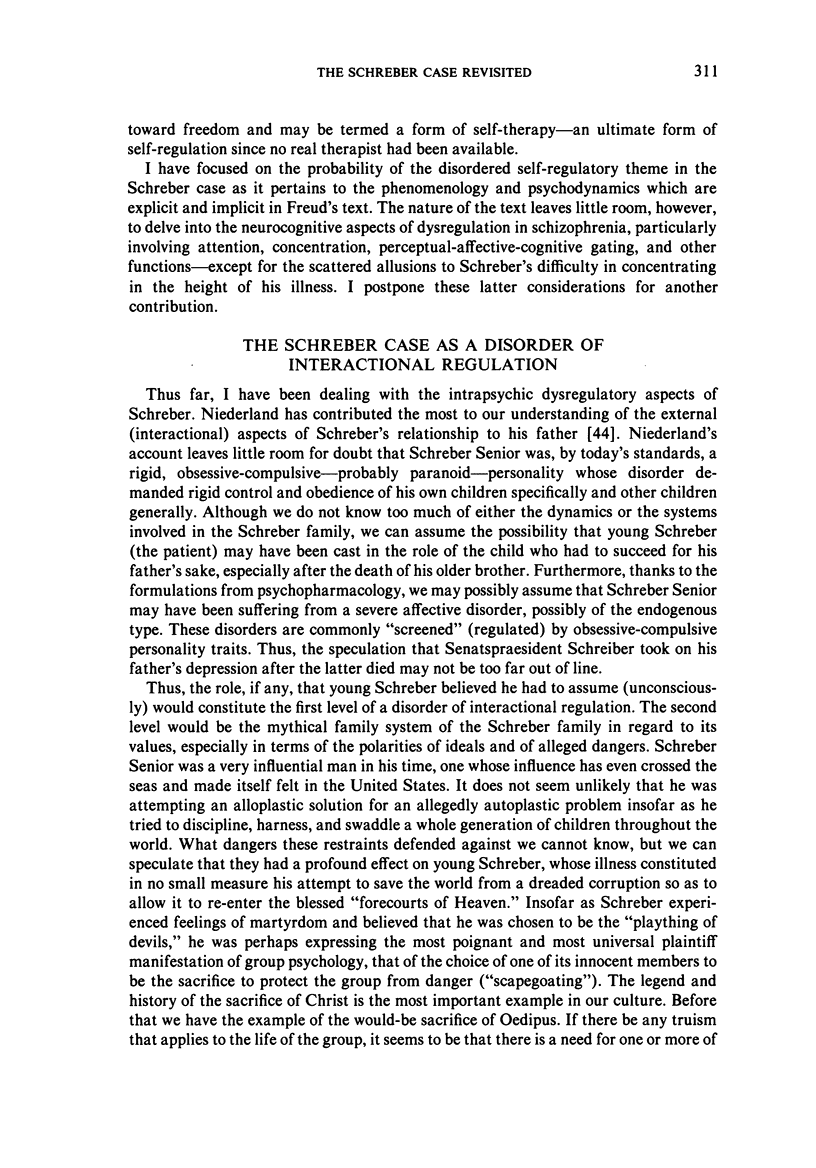
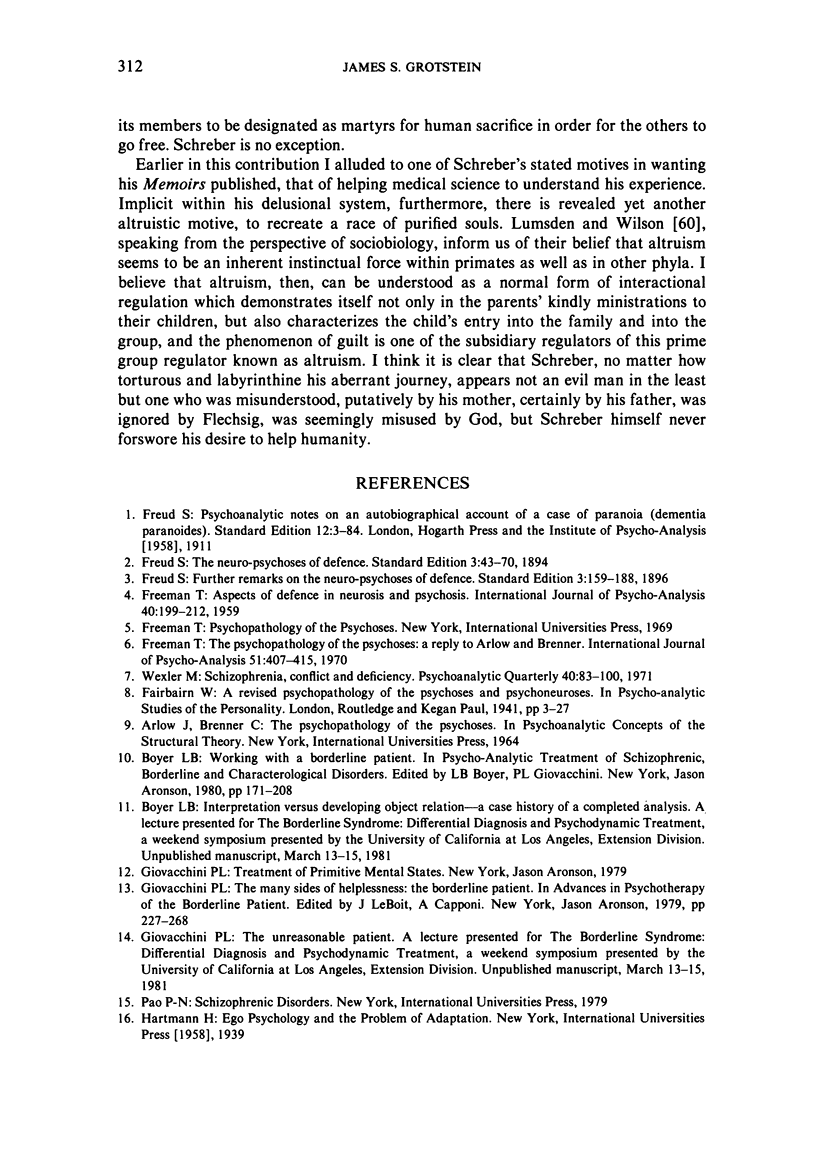
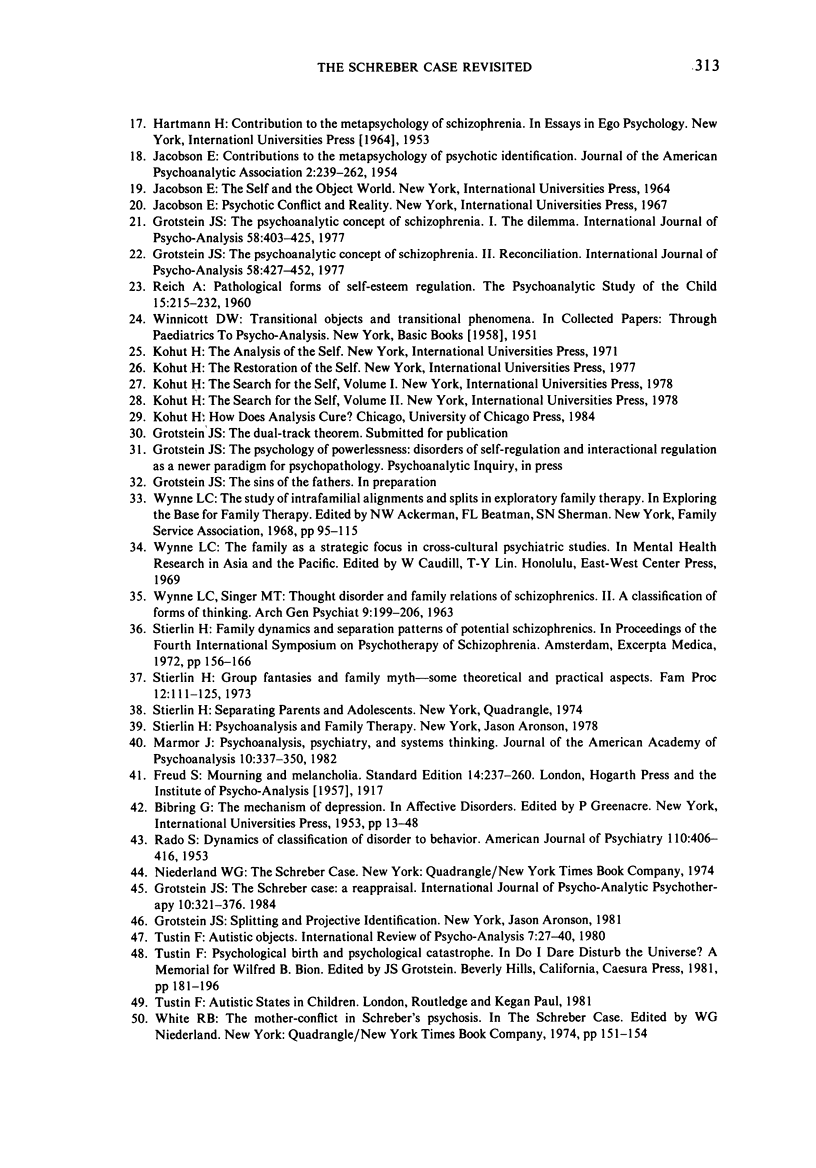
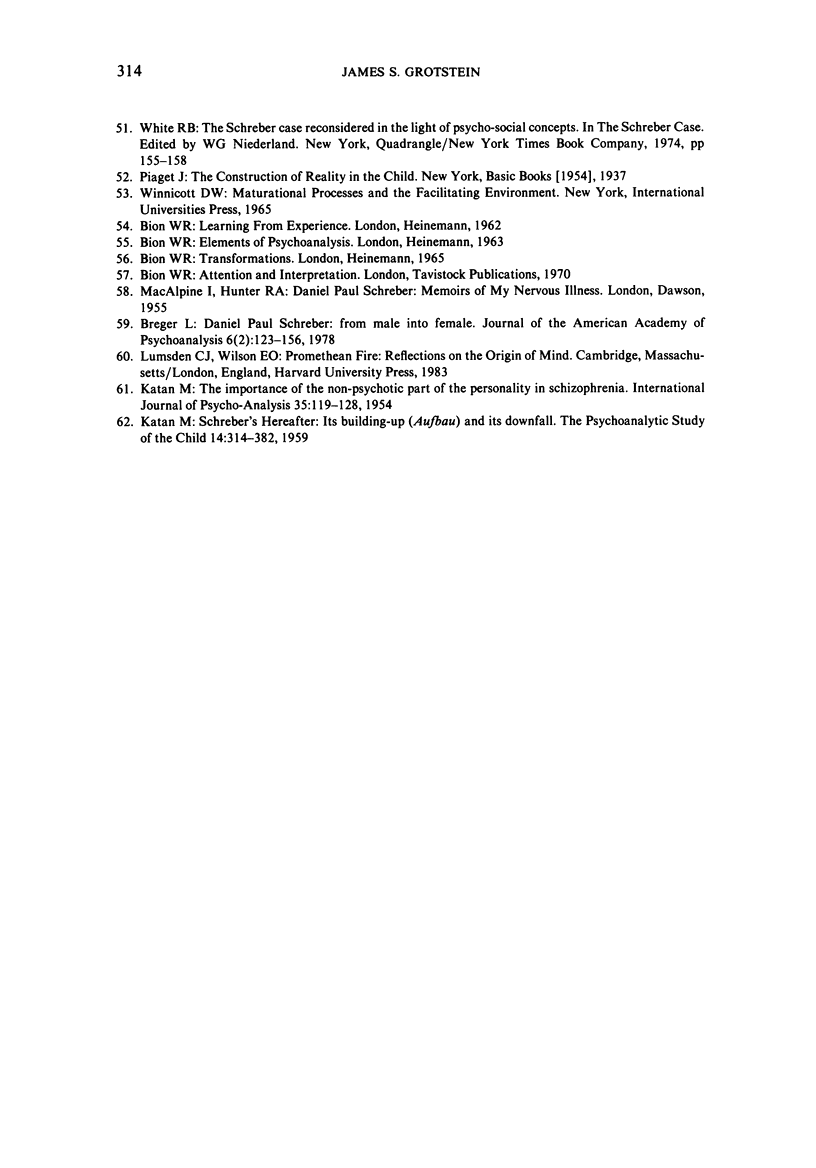
Selected References
These references are in PubMed. This may not be the complete list of references from this article.
- Breger L. Daniel Paul Schreber: from male into female. J Am Acad Psychoanal. 1978 Apr;6(2):123–156. doi: 10.1521/jaap.1.1978.6.2.123. [DOI] [PubMed] [Google Scholar]
- FREEMAN T. Aspects of defence in neurosis and psychosis. Int J Psychoanal. 1959 May-Aug;40:199–212. [PubMed] [Google Scholar]
- Freeman T. The psychopathology of the psychoses: a reply to Arlow and Brenner. Int J Psychoanal. 1970;51(3):407–415. [PubMed] [Google Scholar]
- Grotstein J. S. The Schreber case: a reappraisal. Int J Psychoanal Psychother. 1984;10:321–375. [PubMed] [Google Scholar]
- Grotstein J. S. The psychoanalytic concept of schizophrenia: I. the dilemma. Int J Psychoanal. 1977;58(4):403–425. [PubMed] [Google Scholar]
- Grotstein J. S. The psychoanalytic concept of schizophrenia: II. reconciliation. Int J Psychoanal. 1977;58(4):427–452. [PubMed] [Google Scholar]
- JACOBSON E. Contribution to the meta-psychology of psychotic identifications. J Am Psychoanal Assoc. 1954 Apr;2(2):239–262. doi: 10.1177/000306515400200204. [DOI] [PubMed] [Google Scholar]
- KATAN M. The importance of the nonpsychotic part of the personality in schizophrenia. Int J Psychoanal. 1954;35(2):119–128. [PubMed] [Google Scholar]
- Marmor J. Psychoanalysis, psychiatry and systems thinking. J Am Acad Psychoanal. 1982 Jul;10(3):337–350. doi: 10.1521/jaap.1.1982.10.3.337. [DOI] [PubMed] [Google Scholar]
- RADO S. Dynamics and classification of disordered behavior. Am J Psychiatry. 1953 Dec;110(6):406–416. doi: 10.1176/ajp.110.6.406. [DOI] [PubMed] [Google Scholar]
- REICH A. Pathologic forms of self-esteem regulation. Psychoanal Study Child. 1960;15:215–232. doi: 10.1080/00797308.1960.11822576. [DOI] [PubMed] [Google Scholar]
- WYNNE L. C., SINGER M. T. Thought disorder and family relations of schizophrenics. II. A classification of forms thinking. Arch Gen Psychiatry. 1963 Sep;9:199–206. doi: 10.1001/archpsyc.1963.01720150009002. [DOI] [PubMed] [Google Scholar]
- Wexler M. Schizophrenia: conflict and deficiency. Psychoanal Q. 1971;40(1):83–99. [PubMed] [Google Scholar]


